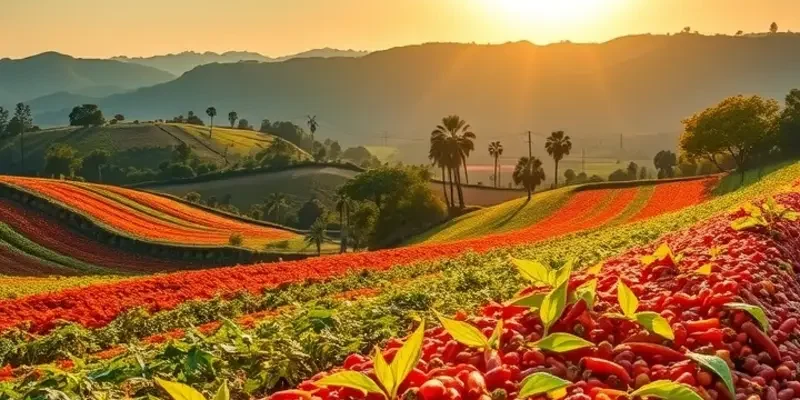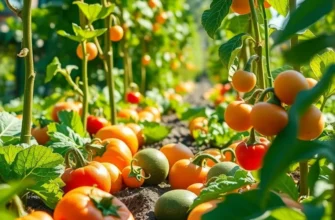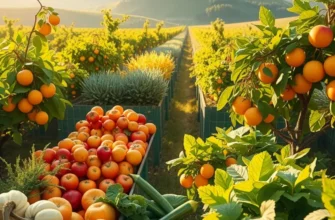Throughout history, exploration has served as a catalyst for significant culinary exchanges, enriching global cuisines with unique flavors and techniques. From the Silk Road to the Age of Discovery and into modern times, the mingling of diverse culinary cultures has shaped what we eat today. This captivating exploration into culinary history reveals how people’s journeys have not only expanded the boundaries of trade but have also inspired gastronomic innovations that reflect the tapestry of our shared human experience.
The Spice Routes: A Flavorful Legacy

The ancient spice routes were not merely trading paths, but lifelines that invigorated global cuisines with exotic flavors and aromas. Spices like cinnamon, pepper, and cloves traversed continents, from the lush lands of Asia to the bustling markets of Europe, igniting culinary imaginations along the way.
Pepper, known today as the ‘king of spices’, originates from India’s Malabar Coast. This pungent, versatile ingredient was highly coveted, and its trade spurred the development of vast maritime networks. European demand for pepper altered consumption patterns, leading chefs to experiment with it in various concoctions. French cuisine, in particular, embraced pepper to enliven everything from rich pates to delicate sauces.
Cinnamon, sourced from Sri Lanka, boasts a sweet, warm note that transformed countless dishes. Its journey to the West catalyzed the creation of iconic flavors in desserts and beverages. The arrival of cinnamon in Europe inspired cinnamon buns in Sweden and the spiced punch known as punsch. Each usage reflects a fusion of local tastes with exotic flair.
Cloves, with their distinct aroma, hail from the Spice Islands of Indonesia. This potent spice became an integral element in developing cuisines worldwide by weaving its fragrance into both savory and sweet dishes. In the Middle East, cloves found their way into savory rice dishes, enriching them with complexity and warmth. In European kitchens, cloves became a staple in festive treats, notably in gingerbread and mulled wine.
The impact of these spices echoes in the culinary traditions of countries far removed from their origins. The cultural exchange facilitated through these trade routes catalyzed creative culinary adaptations. Iconic dishes emerged, some achieving classic status. The Indian curry, enriched with lavish spices, migrated and adapted across continents. Influences led to piquant renditions like the British tikka masala or the Caribbean curries infused with local heat and coconut cream.
This flavorful legacy extends beyond mere recipes. The spice trade impacted agriculture, economies, and even politics. It made food a medium of cultural storytelling. The intricate tapestries of flavor that resulted live on in every dish resonant with the whispers of history. The profound culinary influences drawn from this era remain evident in heritages worldwide.
For those intrigued by how trade and cultural exchange continue to shape our plates today, explore further insights into ‘culinary influences through trade’ to discover more about these fascinating intersections.
Culinary Crossroads: The Fusion of Cultures

The Mediterranean basin, a cradle of culinary exchange, is an epitome of harmonious fusion. It serves as a delicious testament to the migration of flavors across continents. The sun-soaked coasts of Spain, Greece, and Italy are enriched by aromatic spices from Asia, the piquant notes of North Africa, and the robust, hearty ingredients of Europe.
Throughout history, these crossroads have teemed with trade and interaction, laying the foundation for dishes like paella. Originating from the Valencia region, paella combines the rice that traveled from Asia with local Mediterranean ingredientes. It’s a dish that epitomizes cultural synthesis, with each bite telling a tale of ancient trade routes and shared tables.
Similarly, gumbo in the American South illustrates the melting pot of culinary traditions. With primary influences from African, French, and Native American cuisines, gumbo’s rich stew base is enhanced by okra from Africa, filé powder from Native American Choctaw Indians, and the classic French roux. It stands as a flavorful symbol of cultural confluence, celebrating diversity by blending myriad ingredients into a harmonious whole.
The Age of Discovery was pivotal in intensifying these culinary exchanges. Portuguese explorers, with their extensive maritime routes, facilitated spice trade between Asia and Europe, which firmly planted spices such as cinnamon and nutmeg into European diets. The result—dishes brimming with new life, altering the culinary landscape permanently.
This transcontinental exchange birthed not only new recipes but entire culinary identities. The emergence of fusion cuisines reflects an ongoing dialogue between cultures and their flavors, resulting in vibrant, dynamic culinary identities. These are living histories, encapsulated within dishes that continue to shape our plates and palates today.
The significance of these exchanges goes beyond taste—they shed light on the interconnectedness of societies. These culinary interactions reflect a broader historical tapestry, where food becomes a medium for storytelling, connecting cultures regardless of their geographical distances.
For a deeper dive into how culinary influences traversed through trade, check this out. Transforming simple meals into channels of history, the fusion of cuisines stands as a testament to the enduring legacy of cultural interdependence across time and space.
Final words
The journey of culinary exploration paints a rich mosaic from which today’s global cuisine emerges. As cultures blend through trade and travel, unique dishes develop, reflecting the histories and traditions of the peoples involved. Every bite carries the legacy of exploration, reminding us how interconnected we are through food. As food enthusiasts and culturally-curious individuals, embracing these shared culinary narratives not only enhances our dining experiences but also fosters a deeper appreciation for the world’s vast culinary heritage. So, as you indulge in your next meal, consider the journey it took to reach your palate, and celebrate the flavors that unite us all.








